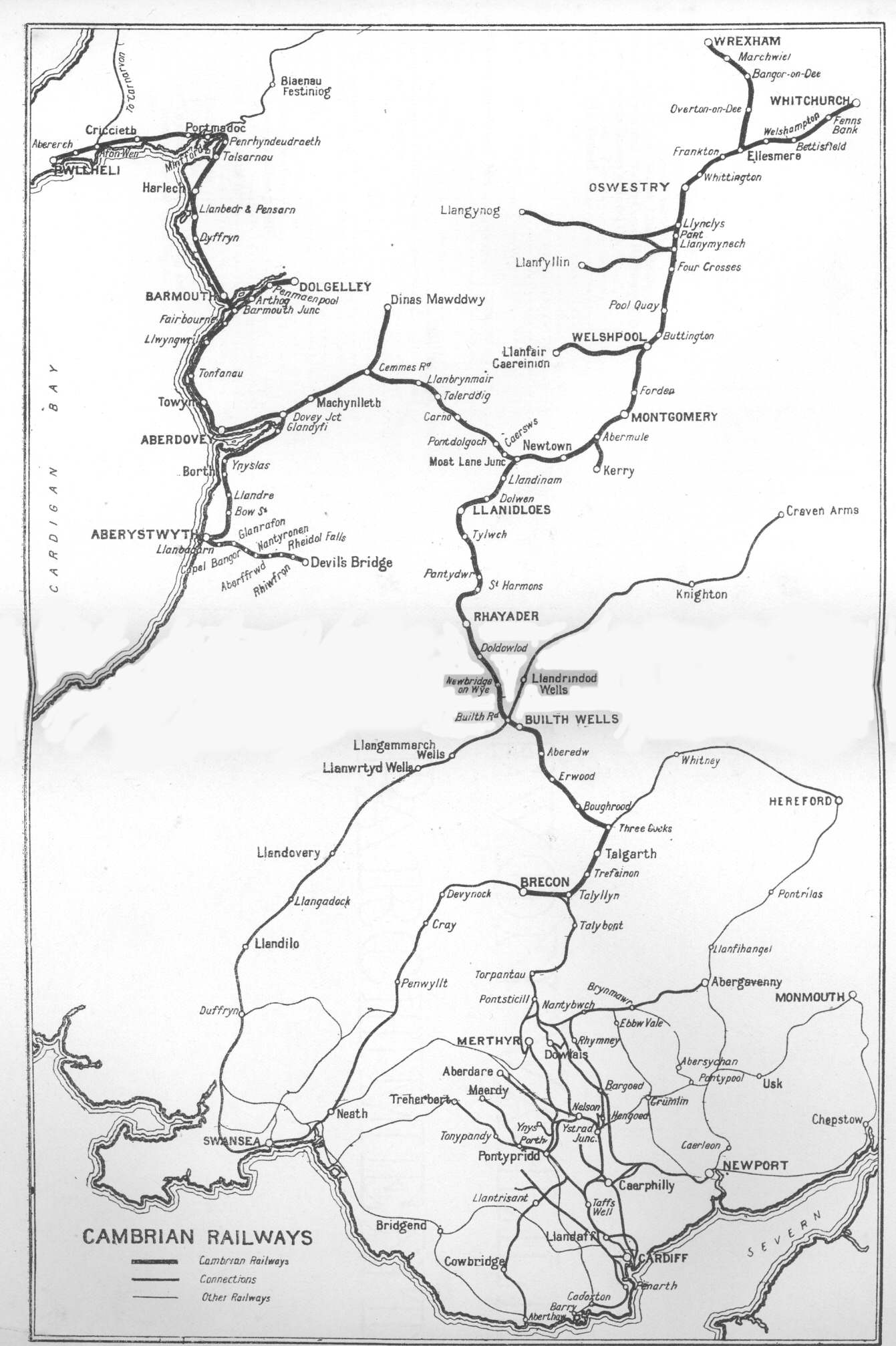|
Wrexham Central Railway Station
Wrexham Central railway station () is the smaller of two railway stations serving the central area of Wrexham in Wales, the other being Wrexham General railway station, Wrexham General. The Railway platform, platform can accommodate a three car Diesel multiple unit, diesel train, but has room for platform extension. It is the southern terminus of the Borderlands Line, also known as the Wrexham-Bidston line, which links north-east Wales to Merseyside. The current station was constructed in 1998 within a retail park in Wrexham city centre known as Island Green. It replaced the first Central station, opened on 1 November 1887, which was a larger station located around 275 yards (250 metres) to the east. The older station closed on 23 November 1998 and the site was cleared as part of the retail development. History The original station The Wrexham, Mold and Connah's Quay Railway (WMCQ) had opened between and Buckley (old station) on 1 May 1866. A southern extension to a station b ... [...More Info...] [...Related Items...] OR: [Wikipedia] [Google] [Baidu] |
Wrexham
Wrexham ( ; ) is a city status in the United Kingdom, city in the North East Wales, north-east of Wales. It lies between the Cambrian Mountains, Welsh mountains and the lower River Dee, Wales, Dee Valley, near the England–Wales border, border with Cheshire in England. Historically in the county of Denbighshire (historic), Denbighshire, it became part of the new county of Clwyd in 1974. It has been the principal settlement and administrative centre of Wrexham County Borough since 1996. At the 2021 United Kingdom census, 2021 census, the built up area had a population of 44,785, and the wider county borough, which also includes surrounding villages and rural areas, had a population of 135,117. Wrexham was awarded city status in 2022. Wrexham was likely founded before the 11th century and developed in the Middle Ages as a regional centre for trade and administration. Wrexham has historically been one of the primary settlements of Wales, and was the largest settlement in Wales fo ... [...More Info...] [...Related Items...] OR: [Wikipedia] [Google] [Baidu] |
Wrexham City Centre
Wrexham city centre is the administrative, cultural and historic city centre of Wrexham, in North Wales and is the area enclosed by the inner ring road of the city. It is the largest shopping area in north and mid Wales, and the administrative centre of Wrexham County Borough. Many of its streets are pedestrianised. Definition and geography Wrexham County Borough Council defined a "Wrexham Town Centre" (prior to city status) in their "Town Centre Masterplan" as most of the retail areas adjacent either side or surrounded by a loop of roadways and railways in the centre of the city. This inner city loop roughly comprises Regent Street, Grosvenor Road, Powell Road, Bodhyfryd, Farndon Street, part of Smithfield Road, Eagles Meadow, Salop Road, St Giles Way, Bridge Street (adjacent road), Brook Street, Pentrefelin, Watery Road, and the Shrewsbury–Chester line railway line between Croesnewydd Level Crossing and Wrexham General railway station, before connecting back to Regent ... [...More Info...] [...Related Items...] OR: [Wikipedia] [Google] [Baidu] |
Public Address
A public address system (or PA system) is an electronic system comprising microphones, amplifiers, loudspeakers, and related equipment. It increases the apparent volume (loudness) of a human voice, musical instrument, or other acoustic sound source or recorded sound or music. PA systems are used in any public venue that requires that an announcer, performer, etc. be sufficiently audible at a distance or over a large area. Typical applications include sports stadiums, public transportation vehicles and facilities, and live or recorded music venues and events. A PA system may include multiple microphones or other sound sources, a mixing console to combine and modify multiple sources, and multiple amplifiers and loudspeakers for louder volume or wider distribution. Simple PA systems are often used in small venues such as school auditoriums, churches, and small bars. PA systems with many speakers are widely used to make announcements in public, institutional and commercial buildings ... [...More Info...] [...Related Items...] OR: [Wikipedia] [Google] [Baidu] |
Third Rail Electrification
A third rail, also known as a live rail, electric rail or conductor rail, is a method of providing electric power to a railway locomotive or train, through a semi-continuous rigid conductor placed alongside or between the rails of a railway track. It is used typically in a mass transit or rapid transit system, which has alignments in its own corridors, fully or almost fully segregated from the outside environment. Third-rail systems are usually supplied with direct current. Modern tram systems with street running avoid the electrical injury risk of the exposed electric rail by implementing a segmented ground-level power supply, where each segment is electrified only while covered by a vehicle which is using its power. The third-rail system of electrification is not related to the third rail used in dual-gauge railways. The system is generally associated with a low voltage (rarely above 750 V) and is far less used for main lines than overhead line, which with a higher ... [...More Info...] [...Related Items...] OR: [Wikipedia] [Google] [Baidu] |
Station Building, Wrexham Central (geograph 5518732)
Station may refer to: Agriculture * Station (Australian agriculture), a large Australian landholding used for livestock production * Station (New Zealand agriculture), a large New Zealand farm used for grazing by sheep and cattle ** Cattle station, a cattle-rearing station in Australia or New Zealand **Sheep station, a sheep-rearing station in Australia or New Zealand Communications * Radio communication station, a radio frequency communication station of any kind, including audio, TV, and non-broadcast uses ** Radio broadcasting station, an audio station intended for reception by the general public ** Amateur radio station, a station operating on frequencies allocated for ham or other non-commercial use ** Broadcast relay station ** Ground station (or Earth station), a terrestrial radio station for extraplanetary telecommunication with satellites or spacecraft ** Television station * Courier station, a relay station in a courier system ** Station of the ''cursus publicus'', a s ... [...More Info...] [...Related Items...] OR: [Wikipedia] [Google] [Baidu] |
Car Park
A parking lot or car park (British English), also known as a car lot, is a cleared area intended for parking vehicles. The term usually refers to an area dedicated only for parking, with a durable or semi-durable surface. In most jurisdictions where cars are the dominant mode of transportation, parking lots are a major feature of cities and suburban areas. Shopping malls, sports stadiums, and other similar venues often have immense parking lots. (See also: multistorey car park) Parking lots tend to be sources of water pollution because of their extensive impervious surfaces, and because most have limited or no facilities to control runoff. Many areas today also require minimum landscaping in parking lots to provide shade and help mitigate the extent to which their paved surfaces contribute to heat islands. Many municipalities require a minimum numbers of parking spaces for buildings such as stores (by floor area) and apartment complexes (by number of bedrooms). In the Un ... [...More Info...] [...Related Items...] OR: [Wikipedia] [Google] [Baidu] |
Avenbury Sidings
Avenbury is a civil parish in Herefordshire, England. It is on the A465, just south of Bromyard, and by the River Frome. The population of this parish at the 2011 Census was 225. History Avenbury was mentioned on the Domesday Book. The village that was centred on the church of St Mary has now disappeared leaving the parish consisting of a series of farms and hamlets. In the post-medieval period the village had a barn and several lime kilns as well as houses. Parish church The church was founded ca. 840 AD but rebuilt in Norman times; the tower was built in the 13th century. The church was closed in 1931. Many of the Baskerville family are buried in the churchyard. Three of the bells were rehung in St Andrew by the Wardrobe, London, in 1933. In May 2007 the church, which had been acquired by a pagan and artist named Leszek Skuriat in the 1970s was put up for sale and a trust created to buy it for preservation. In June 2009 St Mary's church was bought by a local archaeologis ... [...More Info...] [...Related Items...] OR: [Wikipedia] [Google] [Baidu] |
Beeching Axe
The Beeching cuts, also colloquially referred to as the Beeching Axe, were a major series of route closures and service changes made as part of the restructuring of the nationalised railway system in Great Britain in the 1960s. They are named for Dr. Richard Beeching, then-chair of the British Railways Board and the author of two reports''The Reshaping of British Railways'' (1963) and ''The Development of the Major Railway Trunk Routes'' (1965) that set out proposals for restructuring the railway network, with the stated aim of improving economic efficiency. The first report identified 2,363 stations and of railway line for closure, amounting to 55% of stations, 30% of route miles, and the loss of 67,700 British Rail jobs, with an objective of stemming the large losses being incurred during a period of increasing competition from road transport and reducing the rail subsidies necessary to keep the network running. The second report identified a small number of major routes f ... [...More Info...] [...Related Items...] OR: [Wikipedia] [Google] [Baidu] |
Cambrian Railways
The Cambrian Railways owned of Railway track, track over a large area of mid Wales. The system was an amalgamation of a number of railways that were incorporated in 1864, 1865 and 1904. The Cambrian connected with two larger railways with connections to the northwest of England via the London and North Western Railway, and the Great Western Railway for connections between London and Wales. The Cambrian Railways amalgamated with the Great Western Railway on 1 January 1922 as a result of the Railways Act 1921. The name is continued today in the route known as the Cambrian Line. History Creation of the Cambrian Railways: 1864 The Cambrian Railways Company was created on 25 July 1864 when the (27 & 28 Vict. c. cclxii) received royal assent. The company was formed by amalgamating most of the railway companies in mid Wales: the Oswestry and Newtown Railway, the Llanidloes and Newtown Railway, the Newtown and Machynlleth Railway and the Oswestry, Ellesmere and Whitchurch Rai ... [...More Info...] [...Related Items...] OR: [Wikipedia] [Google] [Baidu] |
Wrexham And Ellesmere Railway
The Wrexham and Ellesmere Railway was a railway line that ran from Wrexham in North Wales, to Ellesmere, Shropshire, Ellesmere in Shropshire, England. The line opened in 1895 and closed in 1962, except for a residual goods service which itself closed in 1981. The line had been conceived as part of a through route to by-pass the dominant Great Western Railway route, but this destiny was never realised, and the line was simply a rural branch. It was worked by the Cambrian Railways effectively as part of that company's system. Wrexham was then the largest town served by the Cambrian Railways.Rex Christiansen and R W Miller, ''The Cambrian Railways: volume II: 1889 - 1968'', David & CHarles, Newton Abbot, The Oswestry, Ellesmere and Whitchurch Railway Whitchurch, Shropshire, Whitchurch was on the Shrewsbury to Crewe main line of the London and North Western Railway, opened in 1858. Oswestry already had a railway connection, since 1849; it was on a branch line from Gobowen, on the Shre ... [...More Info...] [...Related Items...] OR: [Wikipedia] [Google] [Baidu] |
Goods Depot
In economics, goods are anything that is good, usually in the sense that it provides welfare or utility to someone. Alan V. Deardorff, 2006. ''Terms Of Trade: Glossary of International Economics'', World Scientific. Online version: Deardorffs' Glossary of International Economics"good" an Goods can be contrasted with bads, i.e. things that provide negative value for users, like chores or waste. A bad lowers a consumer's overall welfare. Economics focuses on the study of economic goods, i.e. goods that are scarce; in other words, producing the good requires expending effort or resources. Economic goods contrast with free goods such as air, for which there is an unlimited supply.Samuelson, P. Anthony., Samuelson, W. (1980). Economics. 11th ed. / New York: McGraw-Hill. Goods are the result of the Secondary sector of the economy which involves the transformation of raw materials or intermediate goods into goods. Utility and characteristics of goods The change in utility (pleasure ... [...More Info...] [...Related Items...] OR: [Wikipedia] [Google] [Baidu] |
Marshalling Yard
A classification yard (American English, as well as the Canadian National Railway), marshalling yard (British, Hong Kong, Indian, and Australian English, and the former Canadian Pacific Railway) or shunting yard (Central Europe) is a railway yard used to accumulate railway cars on one of several tracks. First, a group of cars is taken to a track, sometimes called a ''lead'' or a ''drill''. From there, the cars are sent through a series of switches called a ''ladder'' onto the classification tracks. Some larger yards may put the lead on an artificially built hill called a ''hump'' to use the force of gravity to propel the cars through the ladder. Freight trains that consist of unrelated cars must be made into a train grouped according to their destinations; this shunting is done at the starting point. Some trains drop and pick up cars along their route in classification yards or at industrial sidings. In contrast is a unit train that carries, for example, automobiles from the ... [...More Info...] [...Related Items...] OR: [Wikipedia] [Google] [Baidu] |








